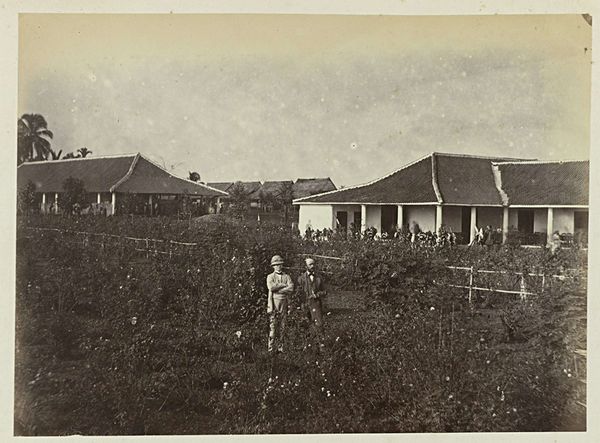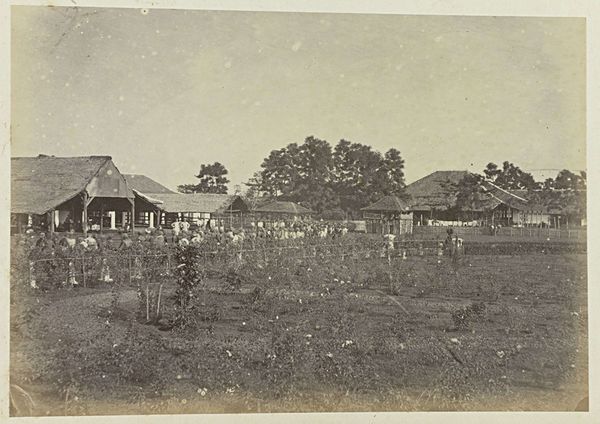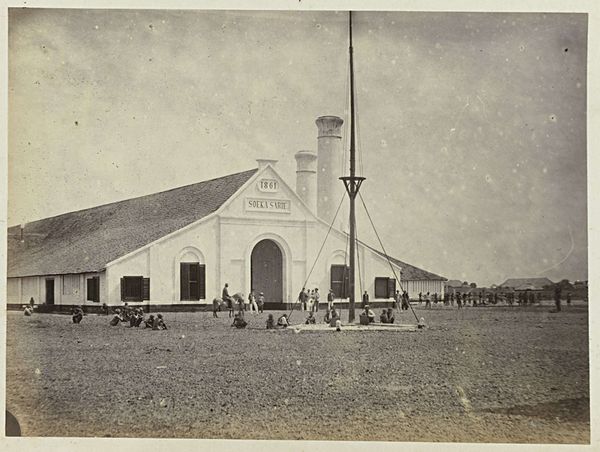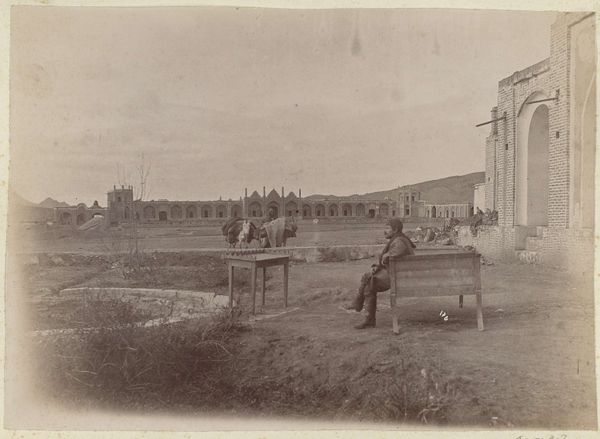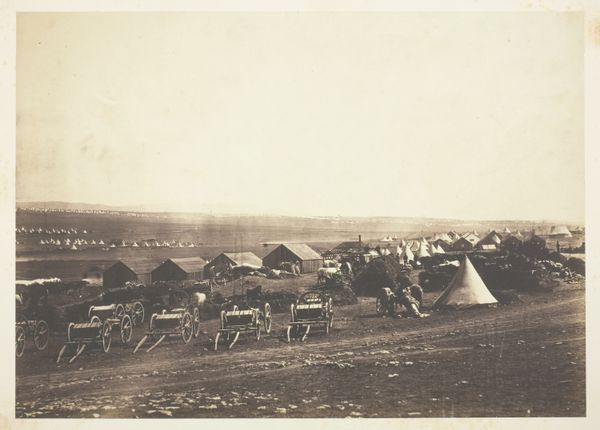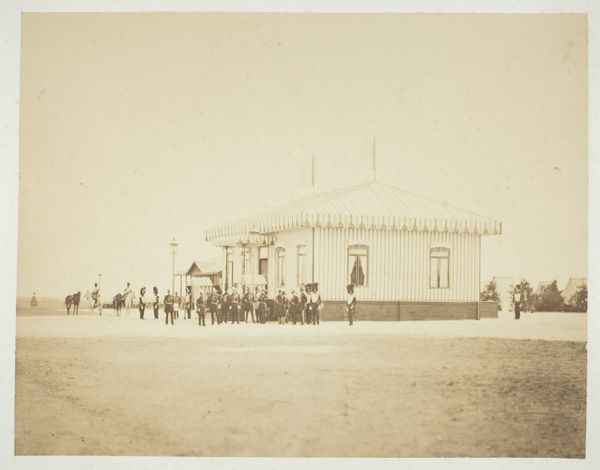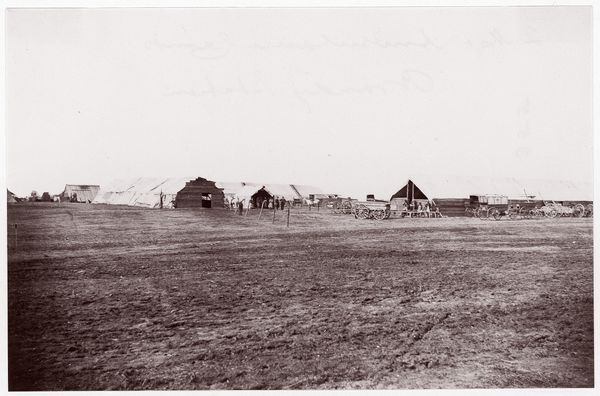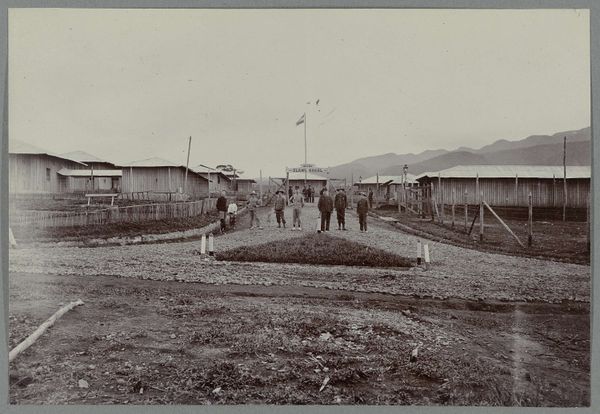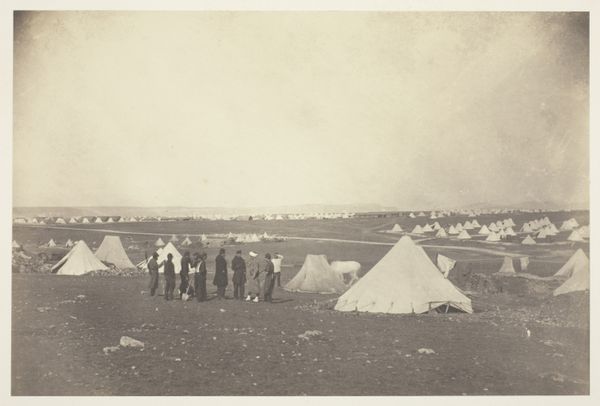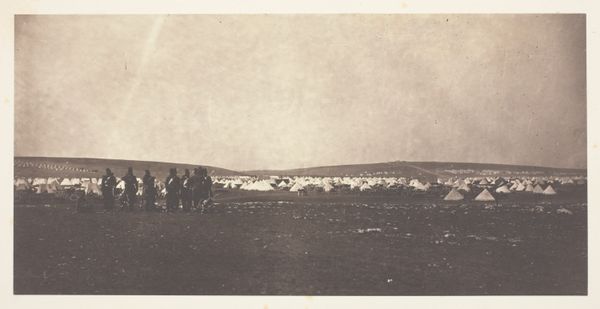
photography, gelatin-silver-print
#
portrait
#
photography
#
orientalism
#
gelatin-silver-print
#
cityscape
Dimensions: height 154 mm, width 196 mm
Copyright: Rijks Museum: Open Domain
Editor: Here we have Woodbury & Page's "Hoofdgebouw met vlaggenmast," a gelatin silver print made sometime between 1863 and 1869. It’s a compelling image; the figures almost seem posed, but the architecture looms large. What do you see in this piece that I might be missing? Curator: Immediately, I'm struck by the presence of the flagpole, not just as a structural element, but as a symbol. Flags themselves are loaded images: How do they function to unite or divide? Editor: That's interesting; I was so focused on the people in the foreground that I overlooked the prominence of the flagpole. Curator: The people contribute a narrative element. Grouped casually, but noticeably. There's a certain visual weight distributed around the image, drawing the eye across the space. Do you think their positioning is accidental, or carefully arranged? Editor: It seems posed, as though they're performing for the camera, even though it might not be intentional. Curator: Exactly! It points to an intentional framing of cultural presence, perhaps designed to project power. The building isn't just a building; it is the "head"quarters – a place that makes clear and visible the power structures present in the setting. The carefully rendered figures highlight and further reinforce this message of controlled visual and spatial rhetoric. The figures at ease, their presence reinforcing this visual projection of controlled visual narrative. What's your sense of the symbolism now? Editor: Now that you point it out, I realize the power dynamic suggested in this image and how this seemingly simple photograph relays that symbolic charge of a place and the message it projects to the world. Curator: Precisely. Visual iconography helps us decode those silent, powerful messages that persist across time.
Comments
No comments
Be the first to comment and join the conversation on the ultimate creative platform.
